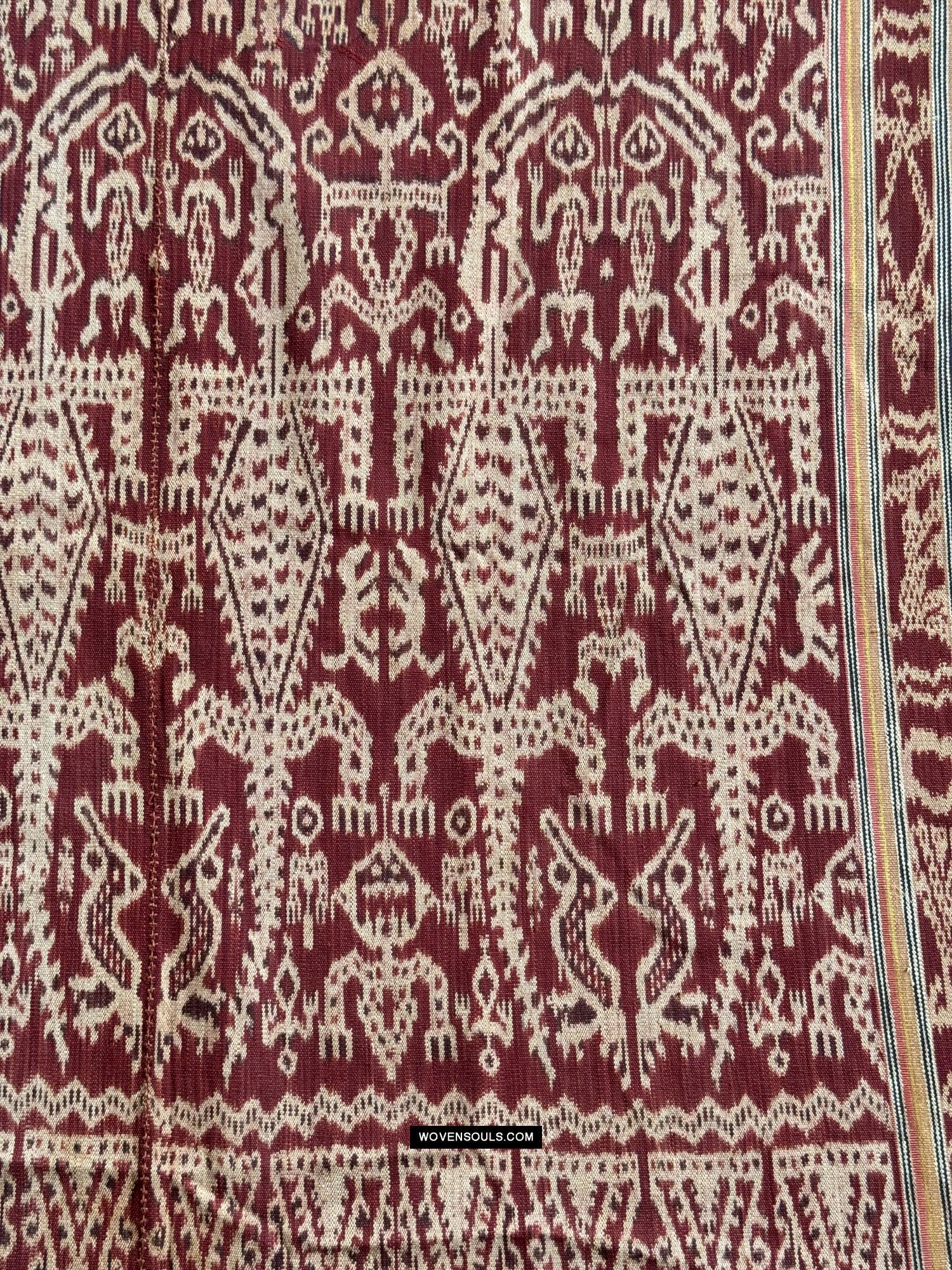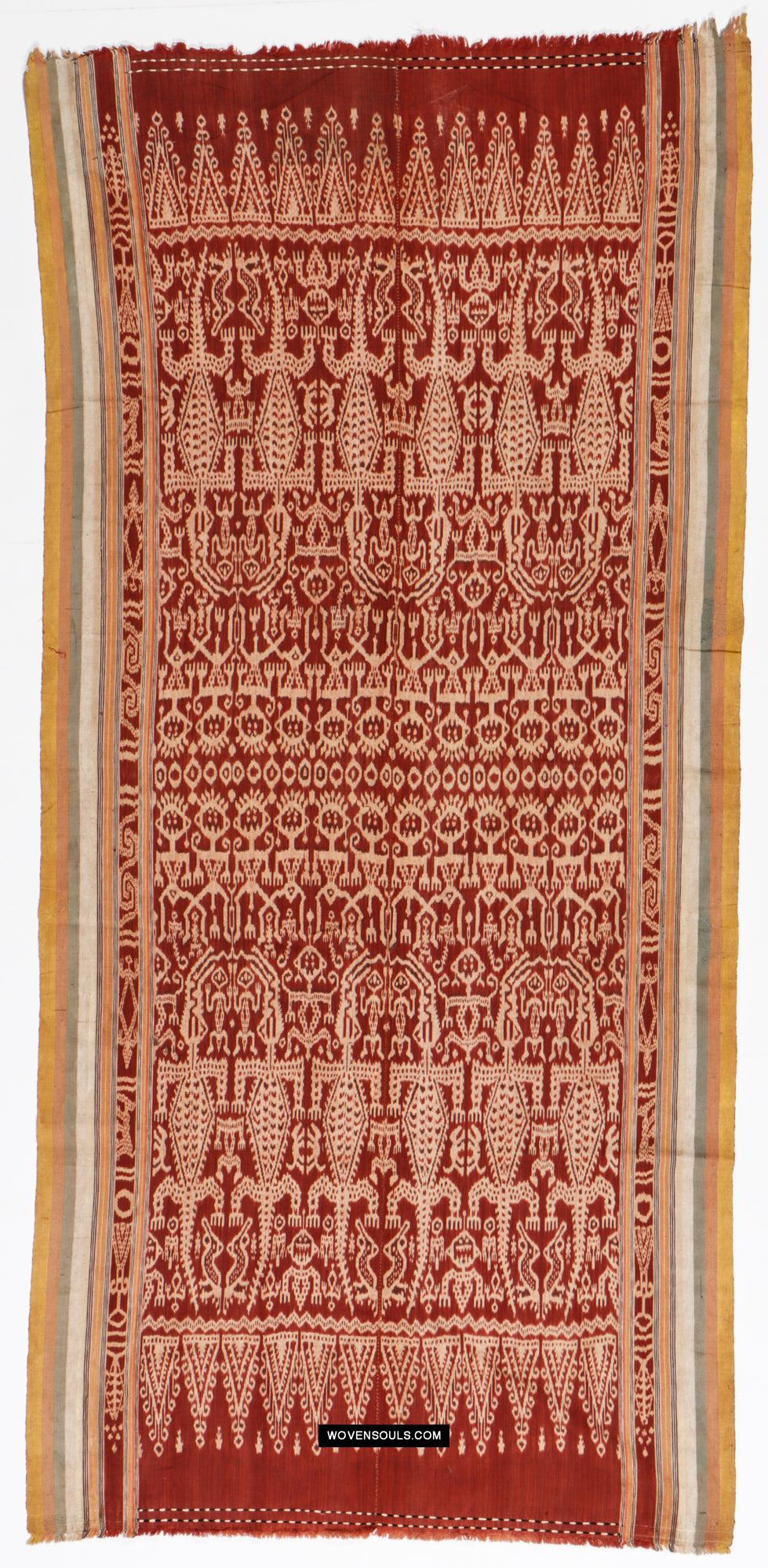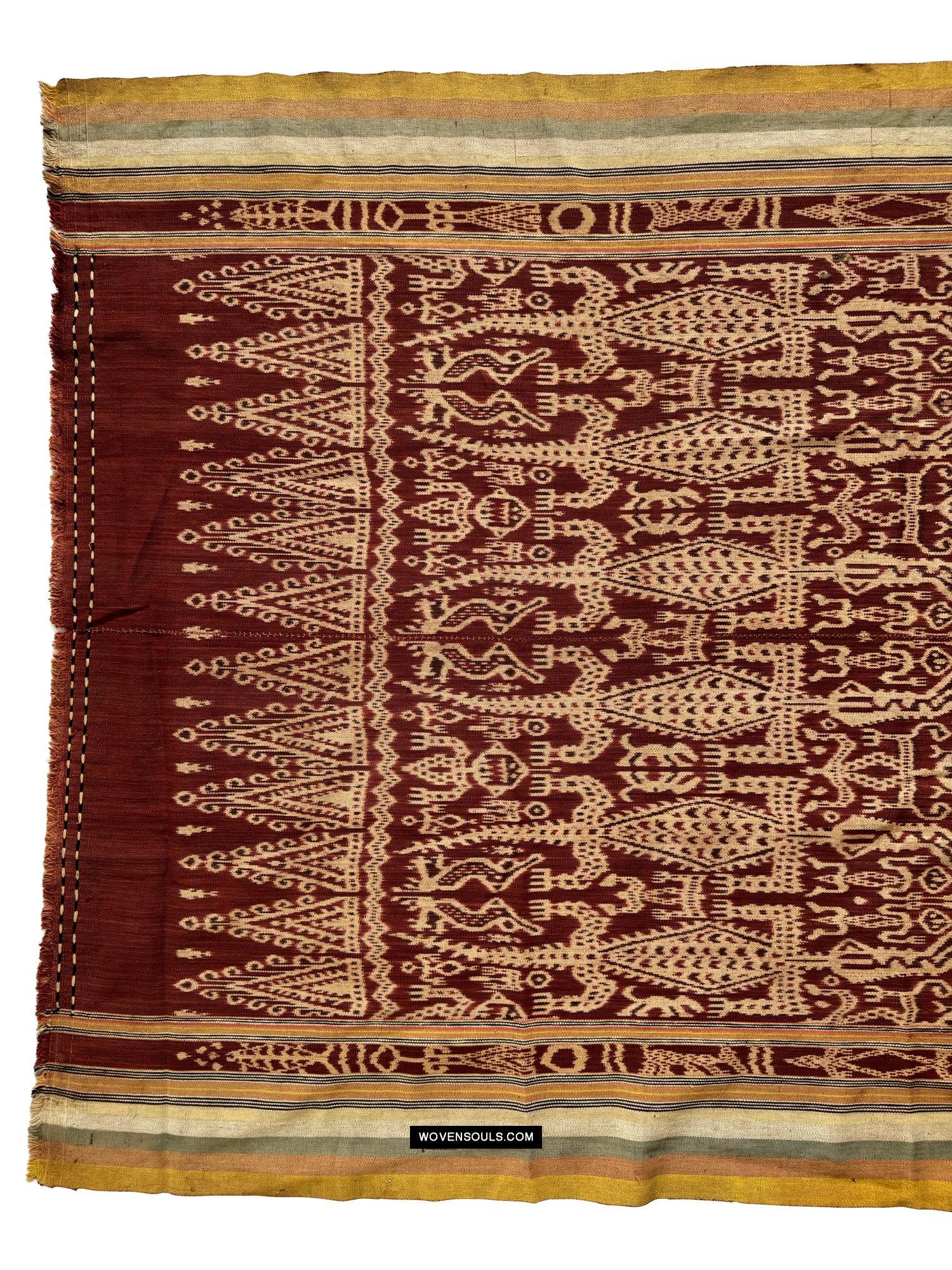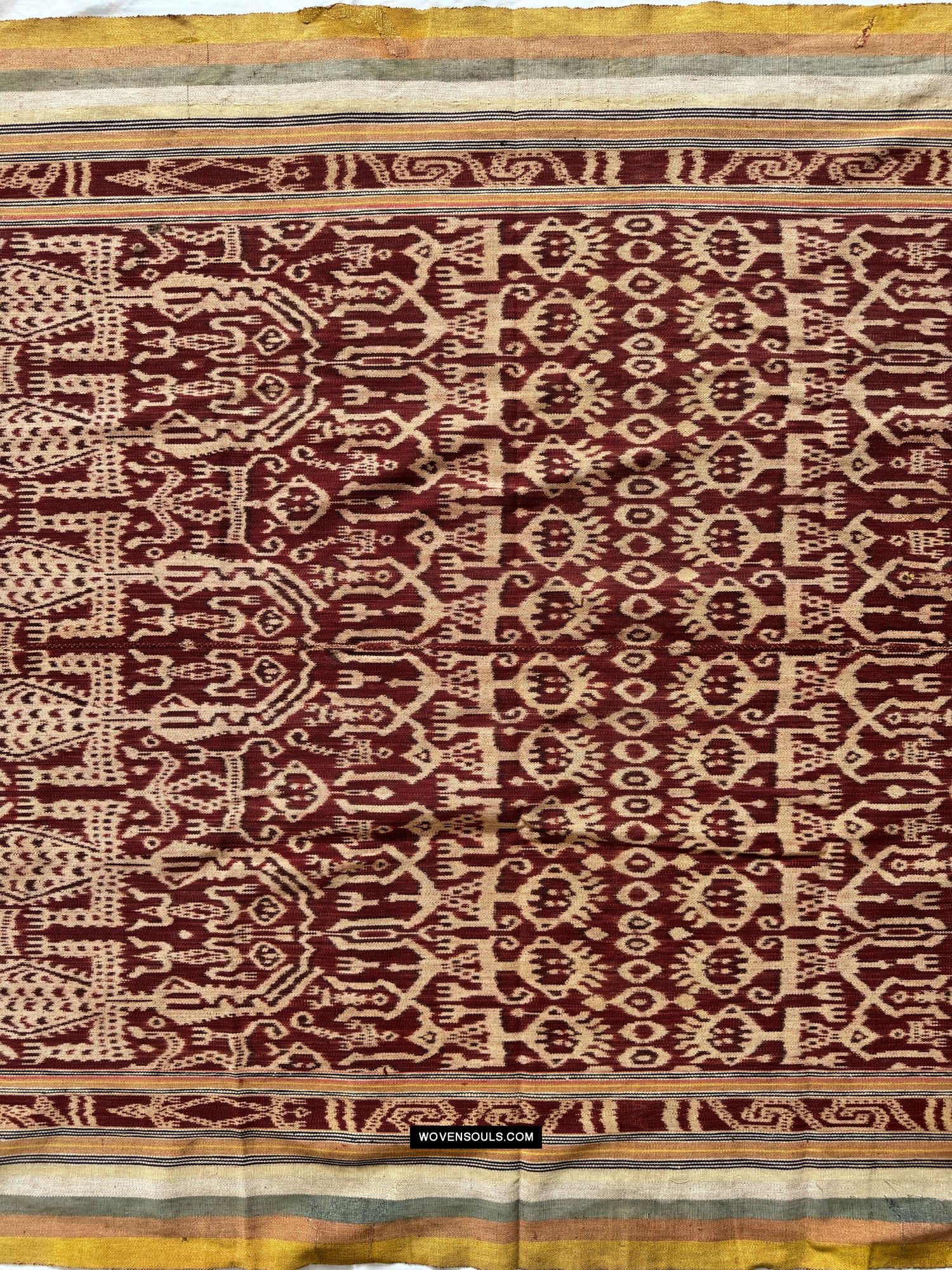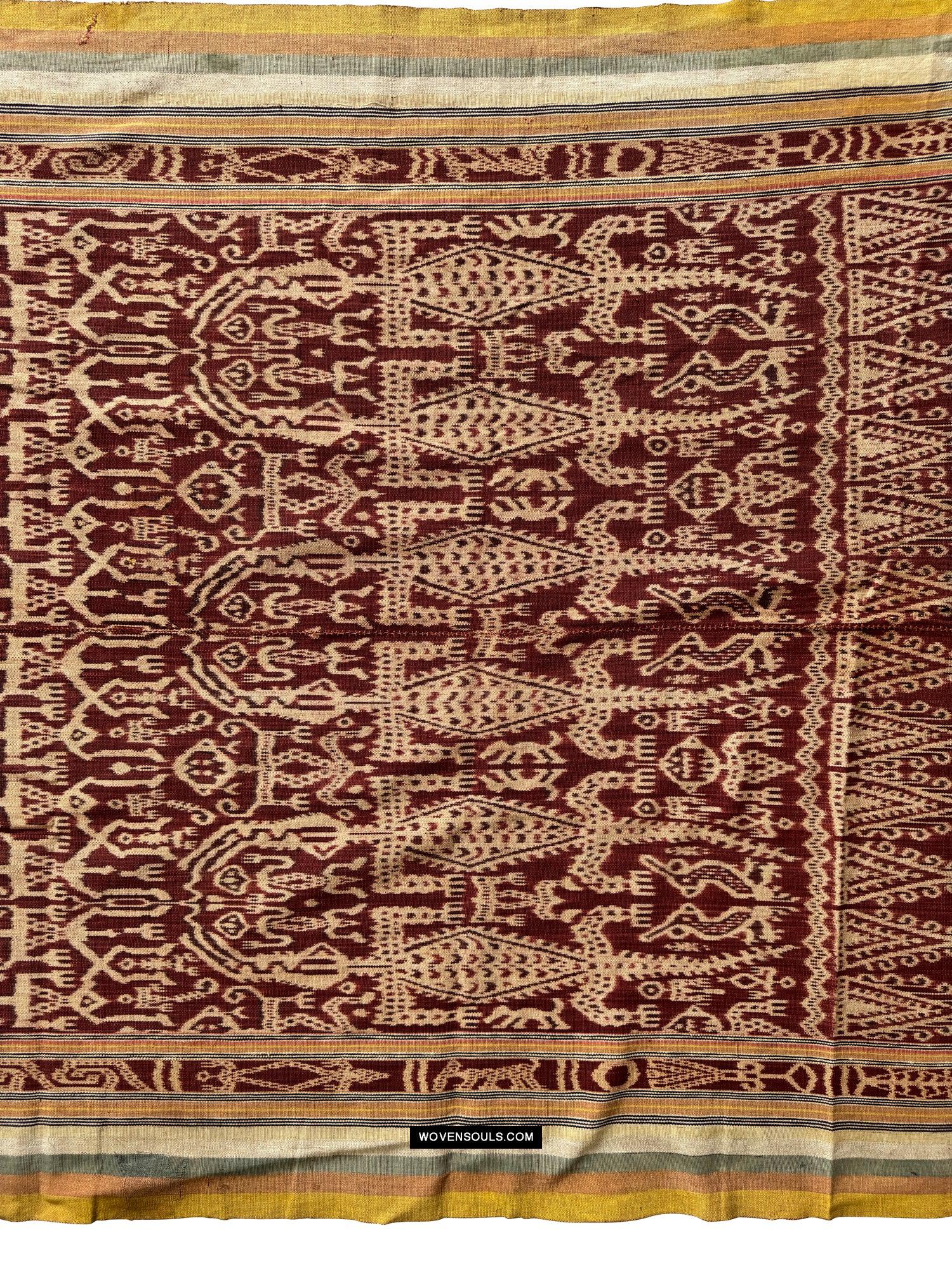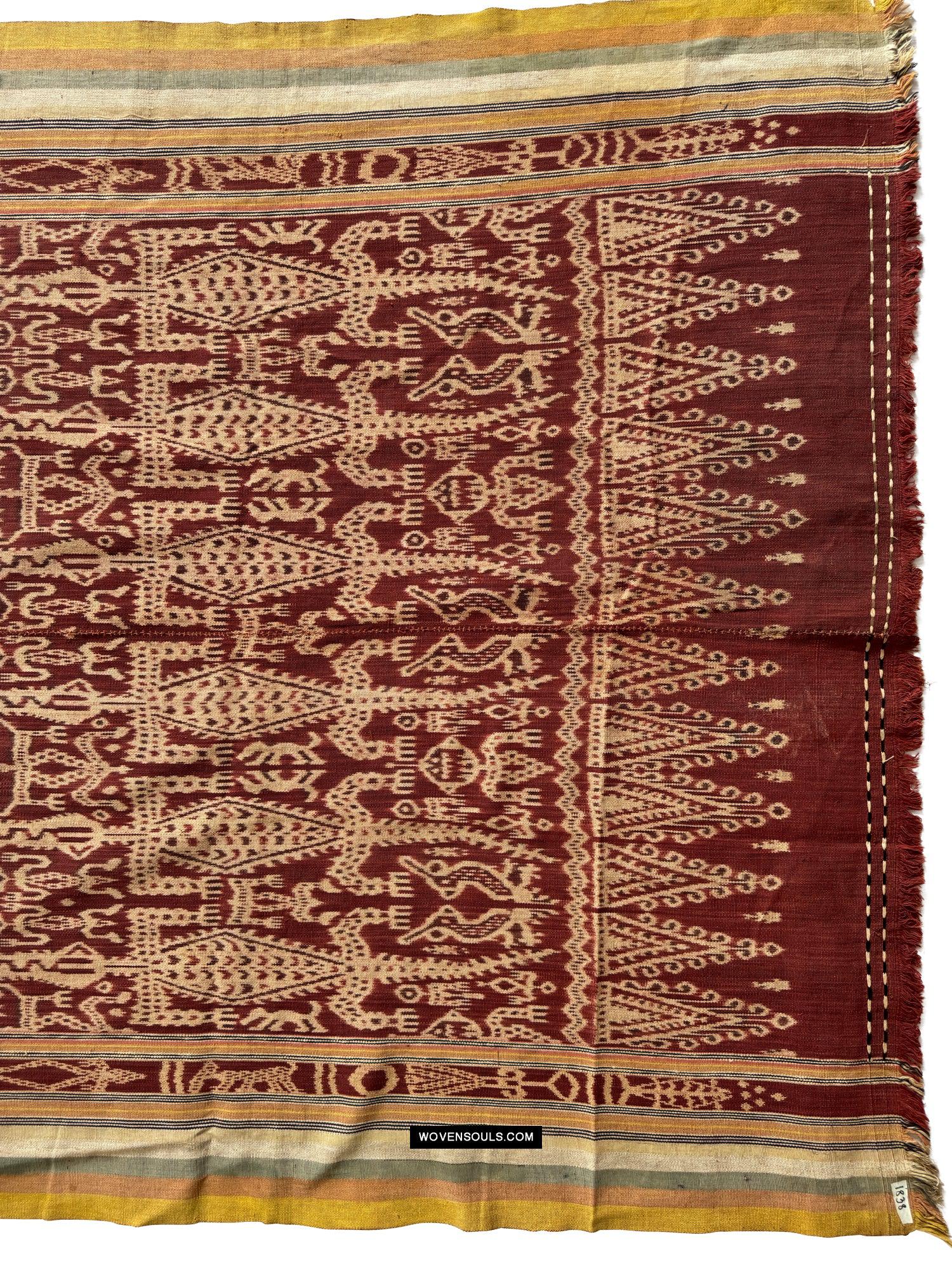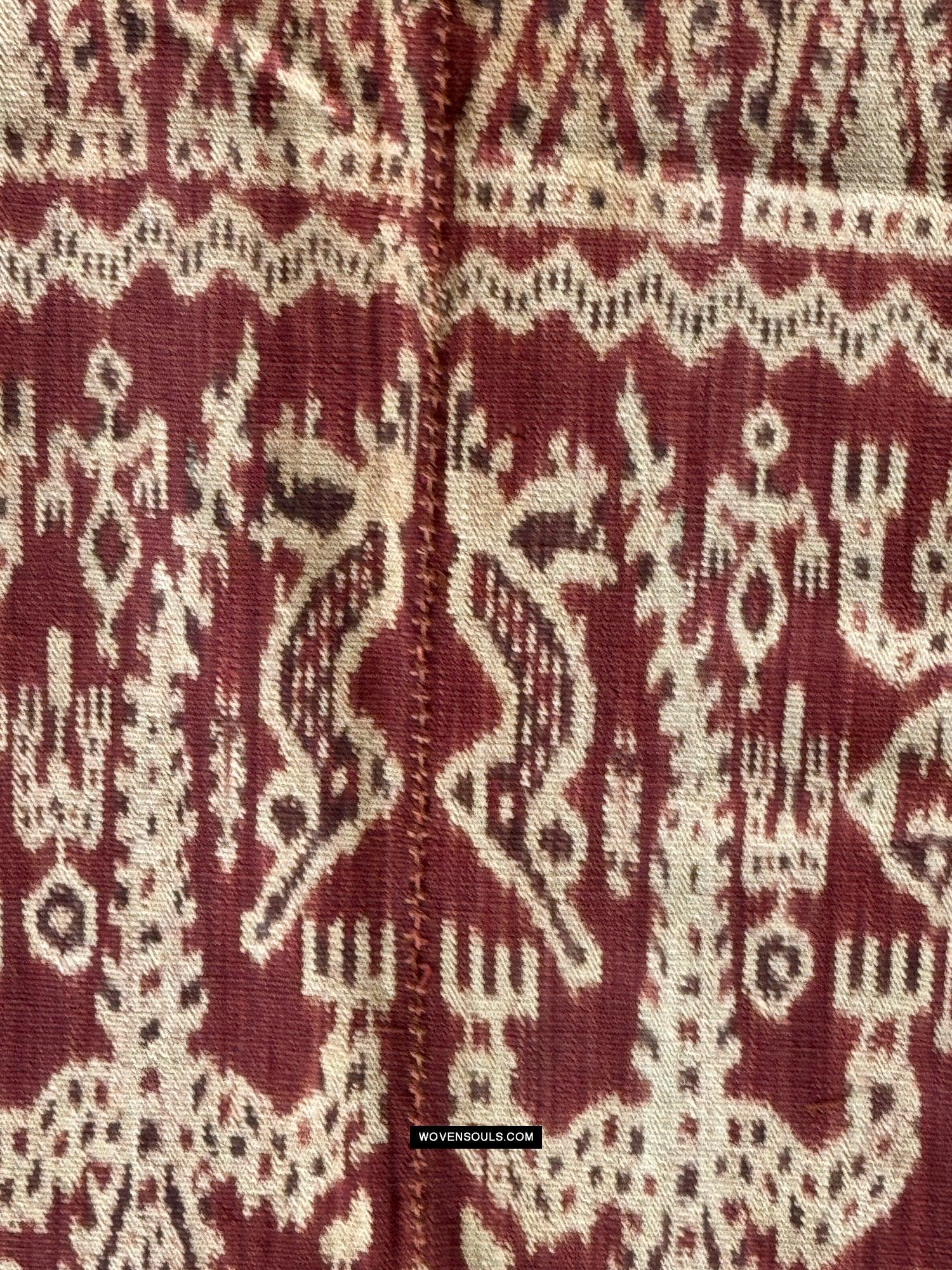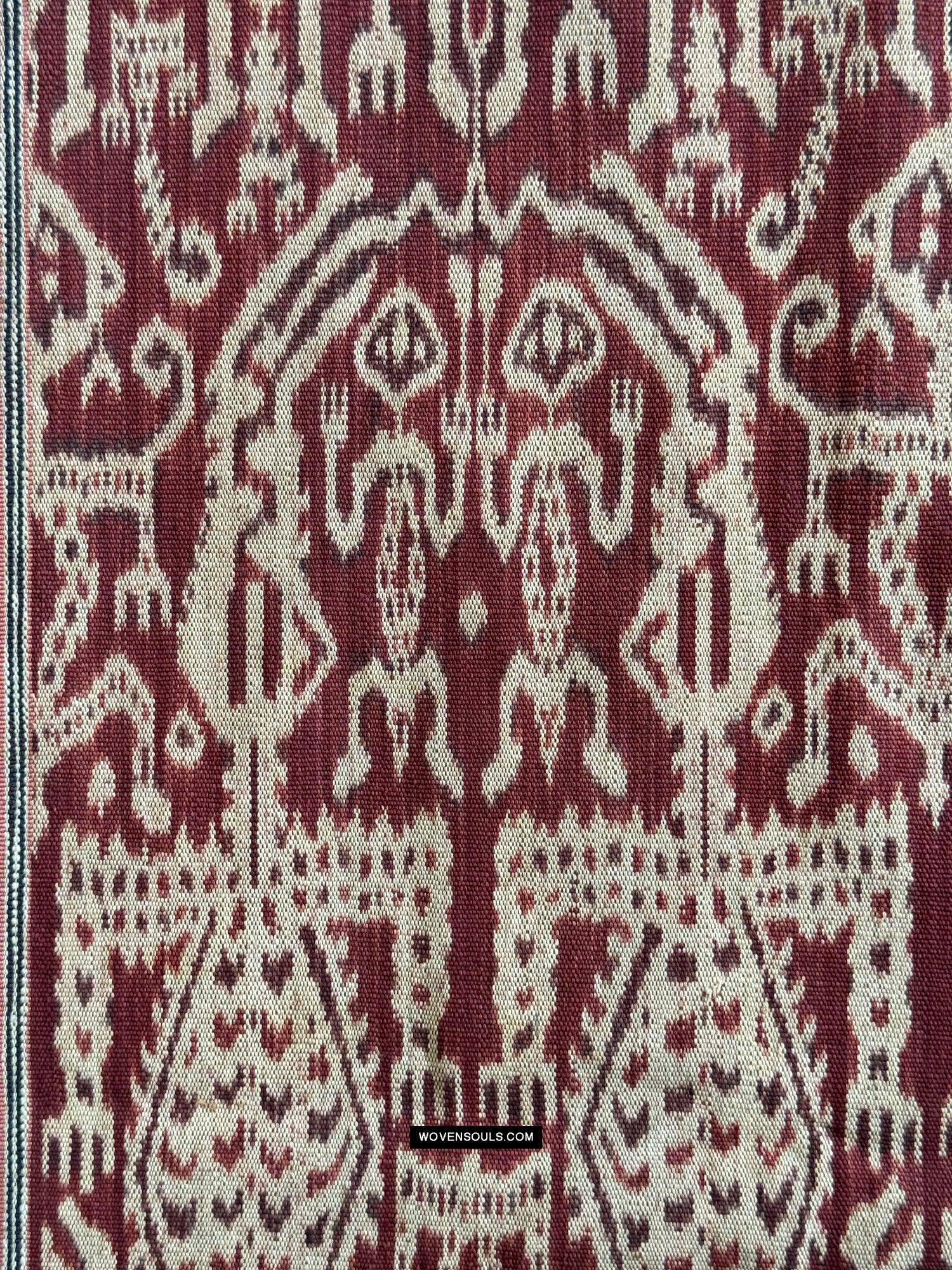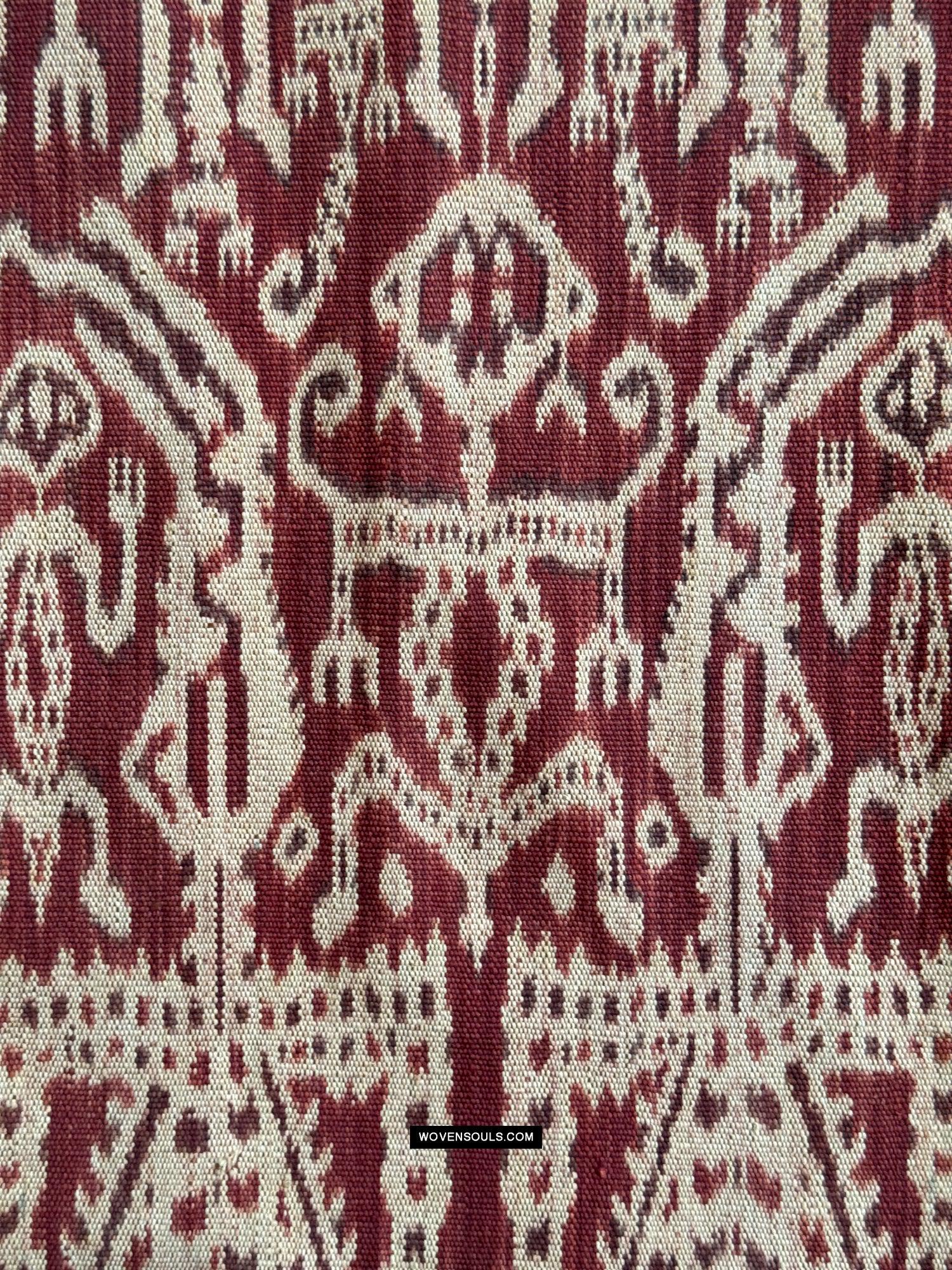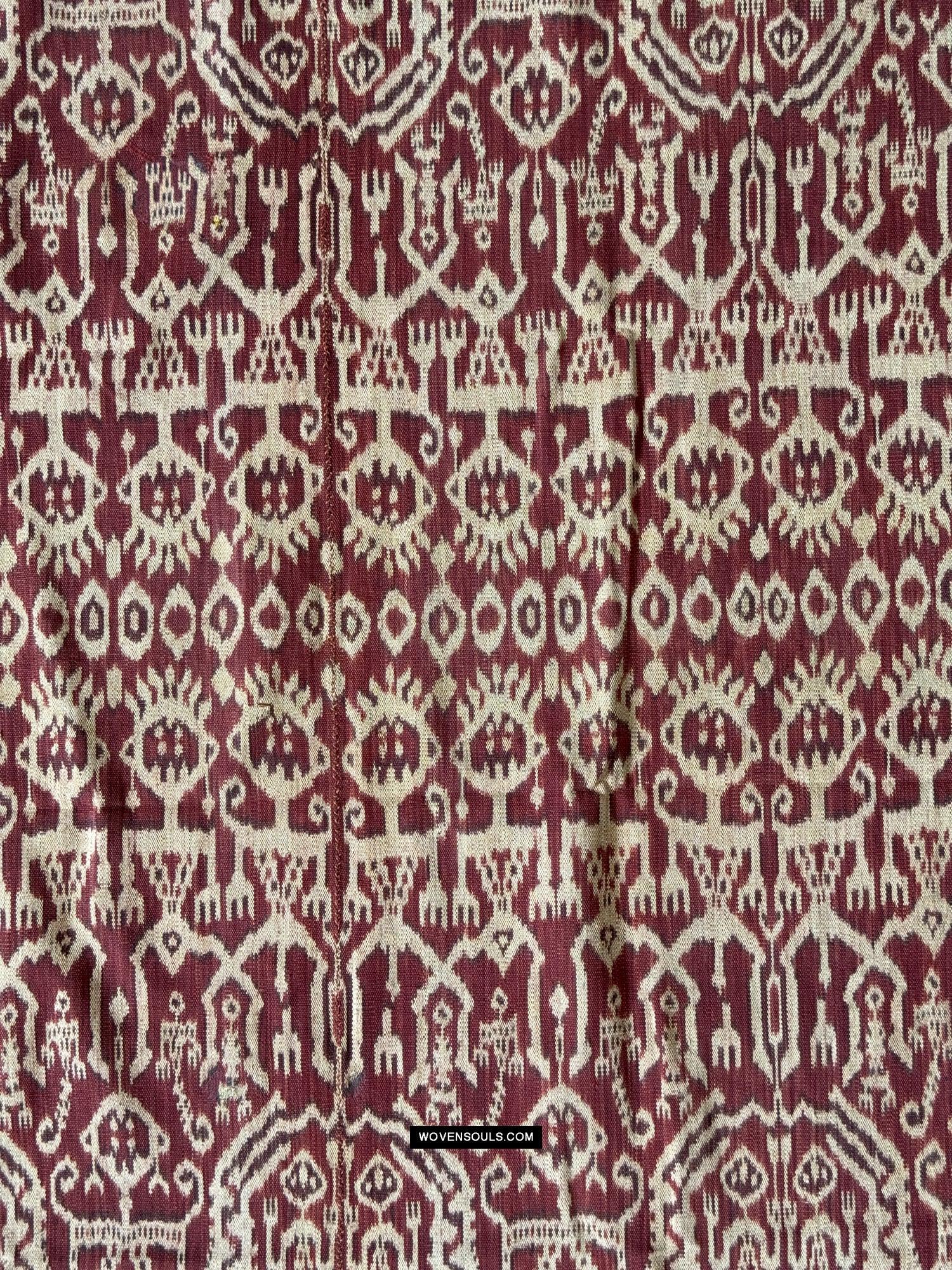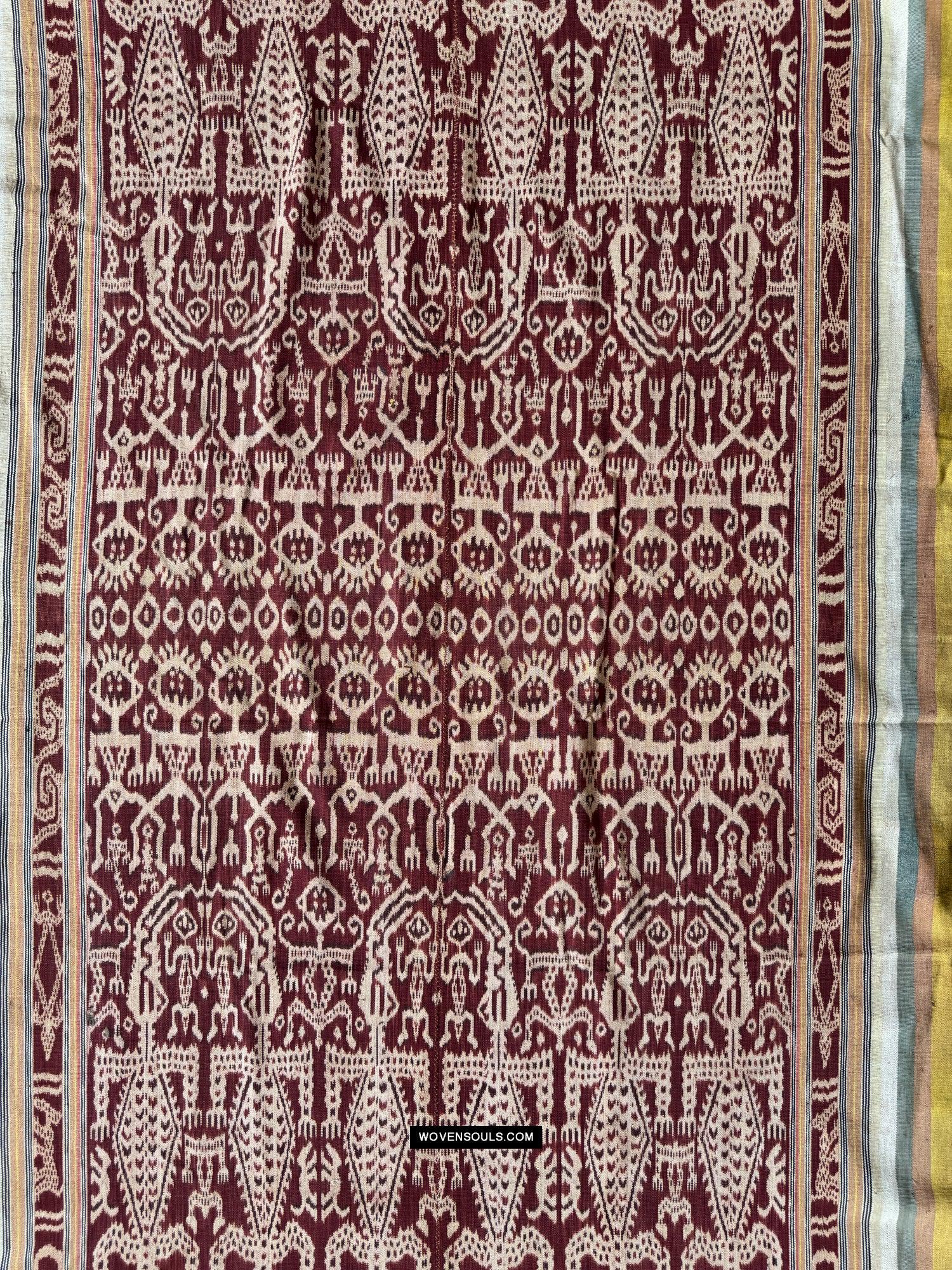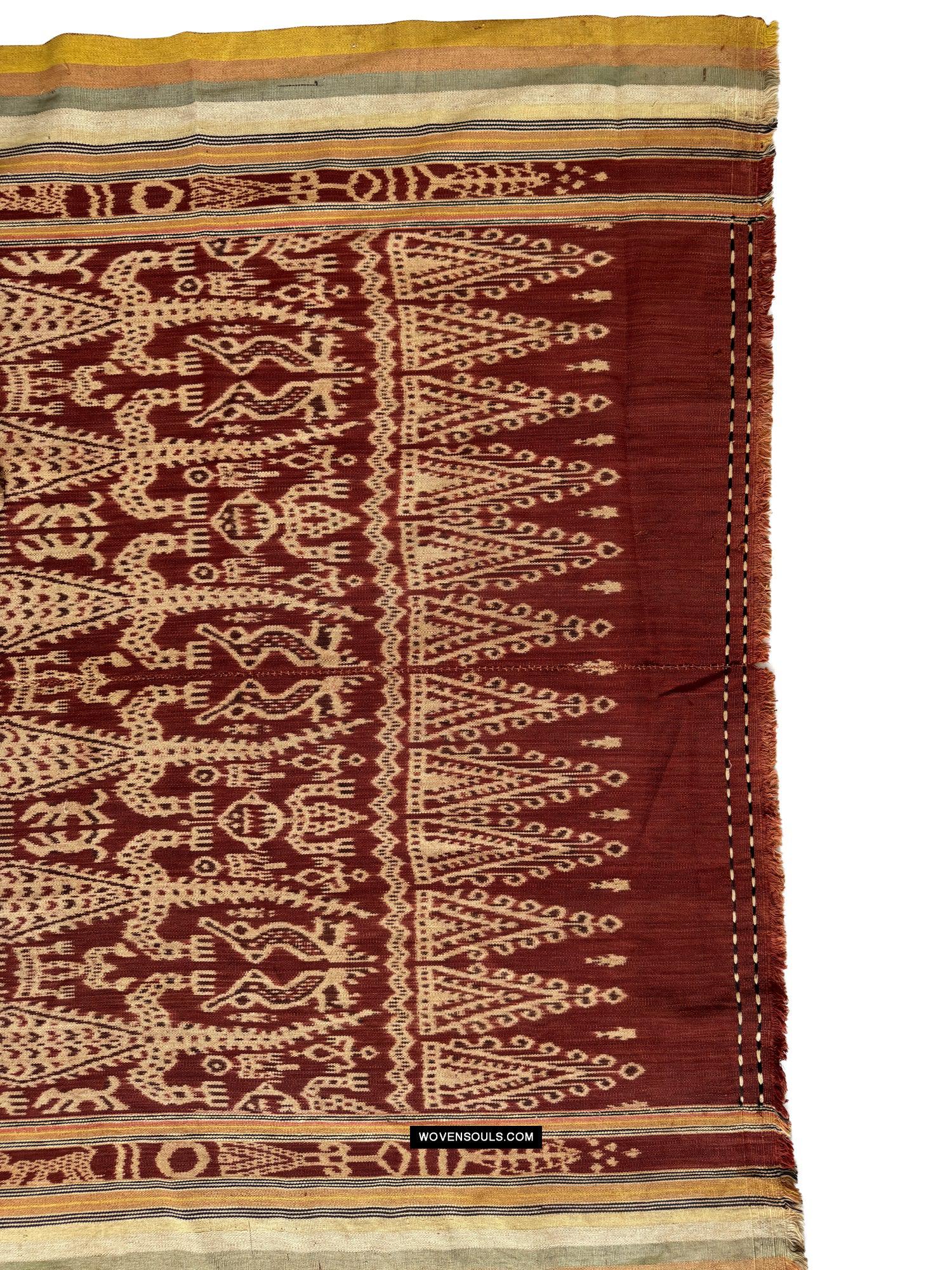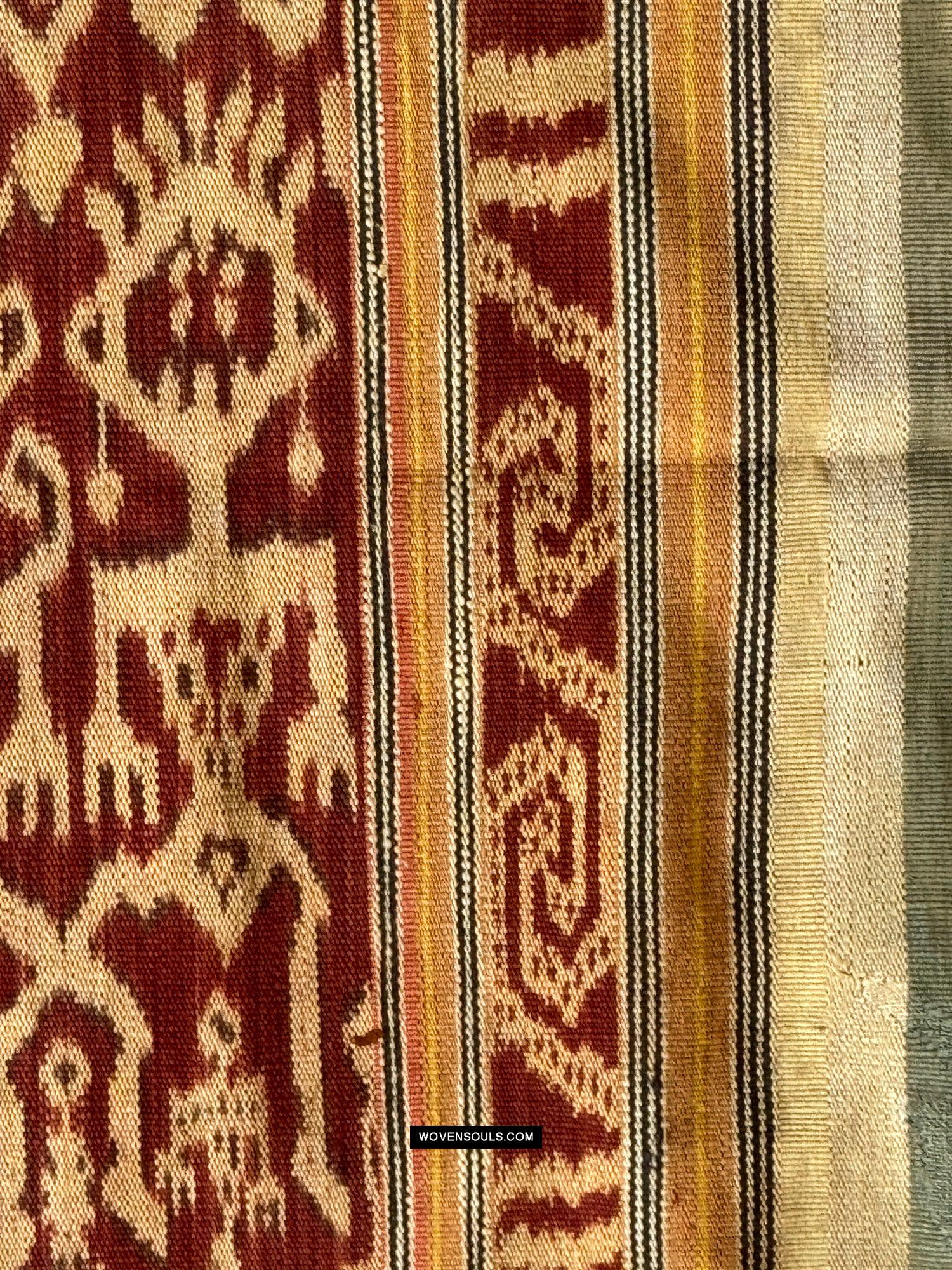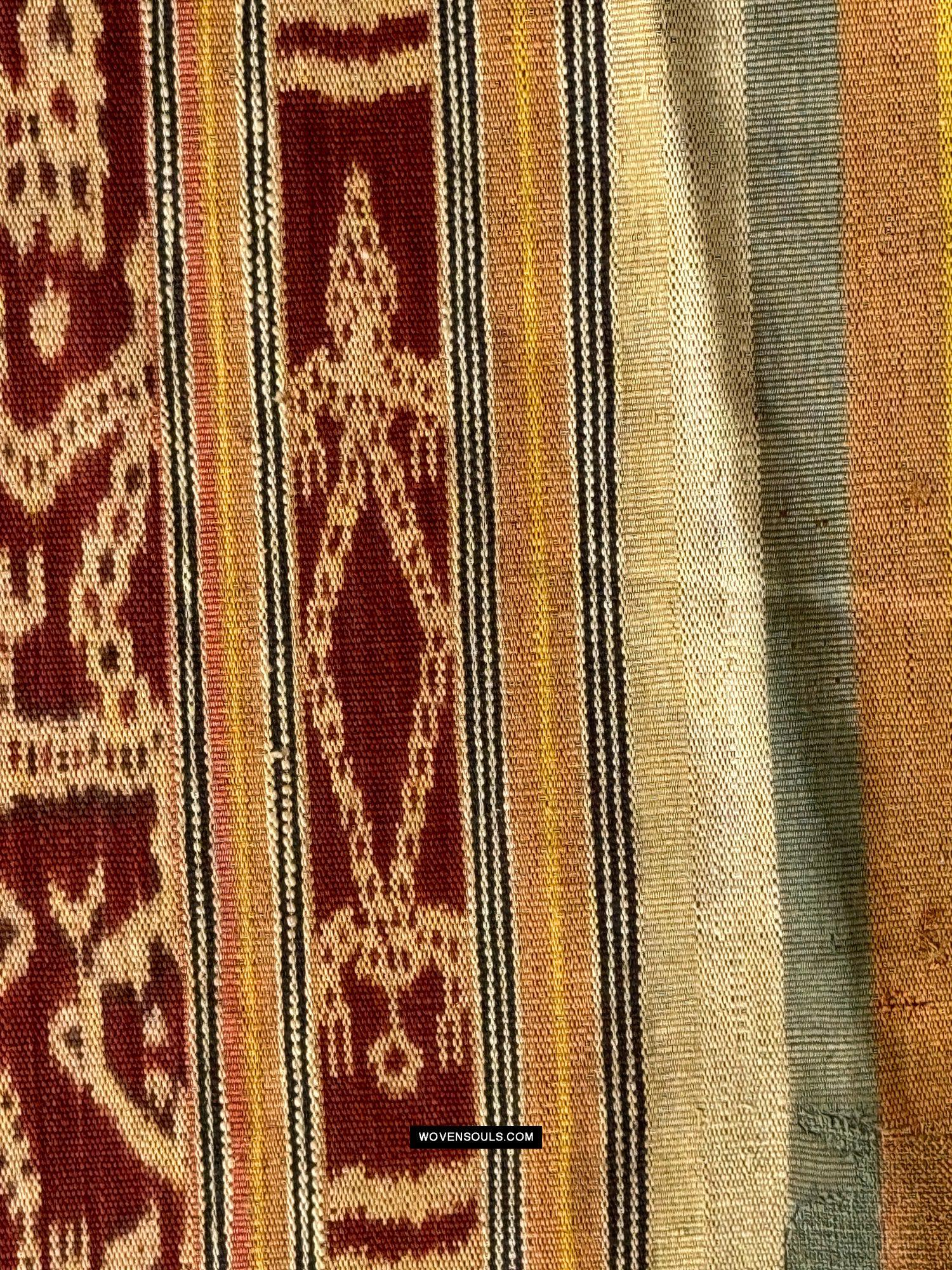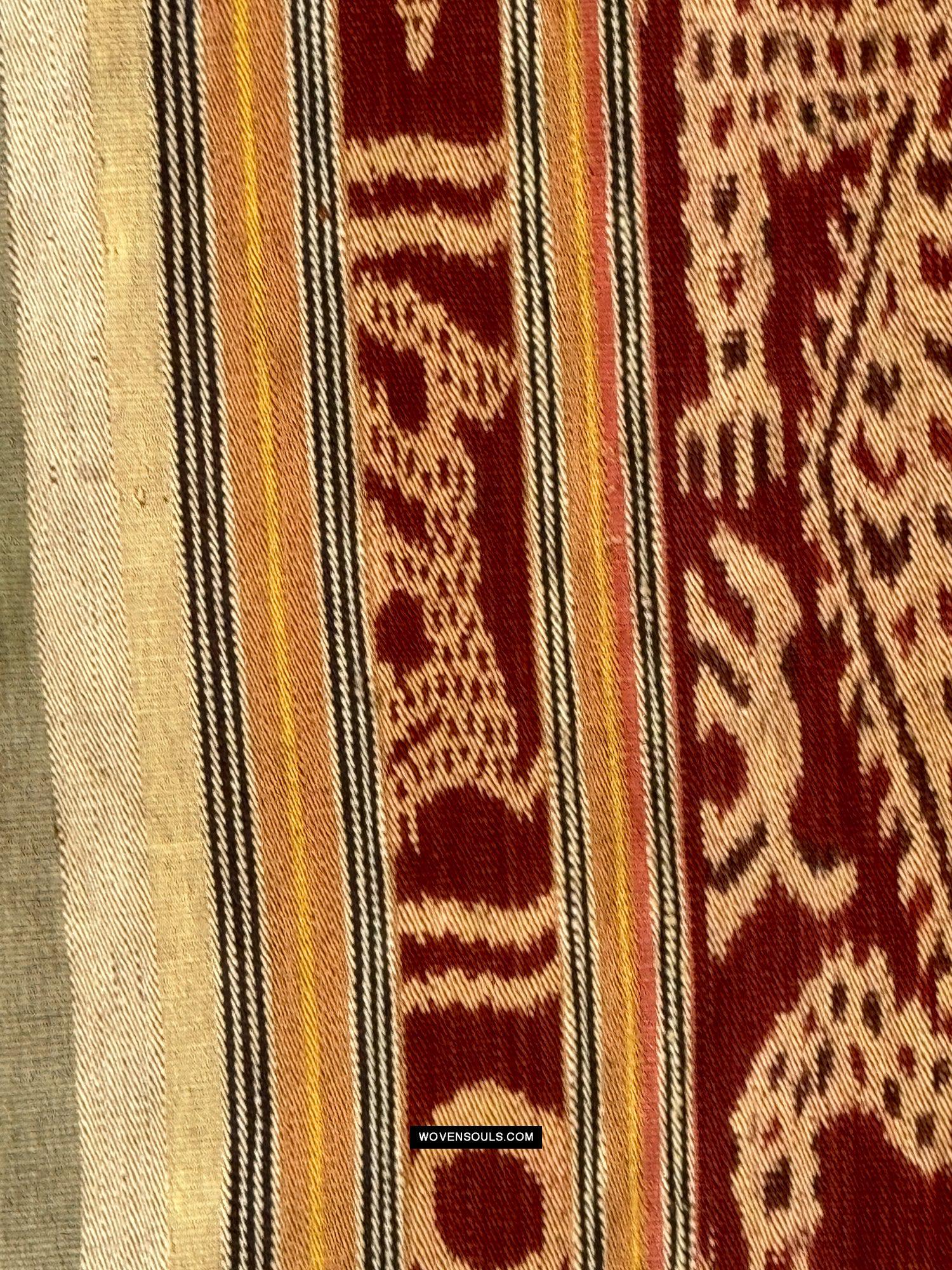1838 Antique Iban Ceremonial Ikat - Anthropomorphic
Antique Iban Ceremonial Ikat Pua Kumbu with superb color and pattern
Among the Iban, textiles are treasured as they are more than just objects made of fibre.
In some cultures, such as the Iban, textiles have played a major, if not central role, in all the ceremonies surrounding the important events in life. Power structures among women are based on dyeing and weaving skills. Perhaps the most important materials owned by families were textiles.
Ikat textiles are among the hardest to make, as the tie-dye is done on the unwoven threads before they are woven into cloth. So with a design in the weaver's imagination, the thread is dyed in sections as per the pattern that is required to be created. This takes immense precision and calculation. So when we note that these textiles were made decades ago in the rainforests of Borneo - Kalimantan, Sabah & Sarawak, there is a sense of awe for the creators.
Further, textiles themselves were believed to have the power to connect to the spirit world. The motifs, the dyes and the complexity of the weaving - all factors that were a direct result of the weaver's skill and experience - contributed to the power held by a textile.
Only textiles with certain features could be used during the most important community ceremonies and the weavers of these therefore enjoyed an elevated status of prestige.
So to study an Iban textile, requires us to focus on patterns, motifs, complexity and lastly and equally importantly - the dyes. The process of dyeing enjoys a far greater role in the value chain of production of Iban textiles than it does in any other group of textiles.
Size: 236 x 137cm
MY NOTES ON THIS LARGE IKAT:
- In this gorgeous textile with many rows of figures - anthropomorphs, crocodiles and more
-
We see dancing men.
- We see pairs under a shelter - all arranged in a scene of some event
- Note the filler elements in each of the figuresin alternating colors - light red and dark brown against a white background.
- Particular attention has been paid to the filler elements in the crocodile figures - these are neither dots nor rice grains - these are crescents - to depict the crocodiles skin!!
- Vertically symmetrically arranged in two halves
- And we see yellow borders that contrasts the colors beautifully
- Reminds me of Fig 17 in 'Textiles from Borneo' by Heribert Amann
CLICK TO SEE THE COMPLETE COLLECTION OF IKAT PUA KUMBU
This item has spent a lifetime being used for the purpose of its creation with the original artist/user. Signs of this life lived heartily may be present on the piece in the form of stains, thread loss, loose threads, holes, tears, color run and other imperfections. Therefore the condition must be assumed to be “not” perfect. More photos of such imperfections will be provided on request.
***

